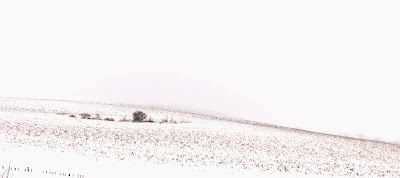This past weekend finally
brought snow to Wisconsin worth paying attention to. Therefore,
I ventured out for a drive to try and find some photos. I was pretty disappointed with the lack of
sunlight but there were some great landscape features that look very different
in a light snowfall. (It almost felt
like fog.)
Photography
like this can be quite fun (if you stay warm) when you look for interesting
textures, lines and patterns. (Kirsten, this photo below is when you passed me on the road.)
For the above photos, I decided on just driving out of town,
since the 5 degree weather (and -10 wind chill) was a little much. The next day the weather was a balmy 15
degrees, so I ventured a hike to Parfey’s Glen; a recently re-opened
"canyon" that was washed out a couple years ago. I think I will defiantly need to head back there
in the spring.
Technical thought process:
Photographically, snow can
be hard to capture right. The white of the snow and the dark of the rocks are at opposite ends of the dynamic range
of the camera. This is made harder in
overcast conditions actually, because it takes away all shadows that can reveal
the texture of the snow. With no shadows it is just a mass of white. I was very careful not to under expose the snow too, the camera may not like it but I wanted that to be almost pure white.
For the driving around shots up top, I had
the opposite problem. When shooting in
the fog (or light falling snow in this case) with a long lens, I am looking
through a lot of moisture in the air so everything actually becomes very
flat. Sure, I can expose the snow to be white, but the trees will look like they are light grey instead of dark. To "fix" this, I needed to really play with the
contrast by using the custom curves option in Light Room in order to see the
difference.
Like everything, photography takes doing and experimenting.



































